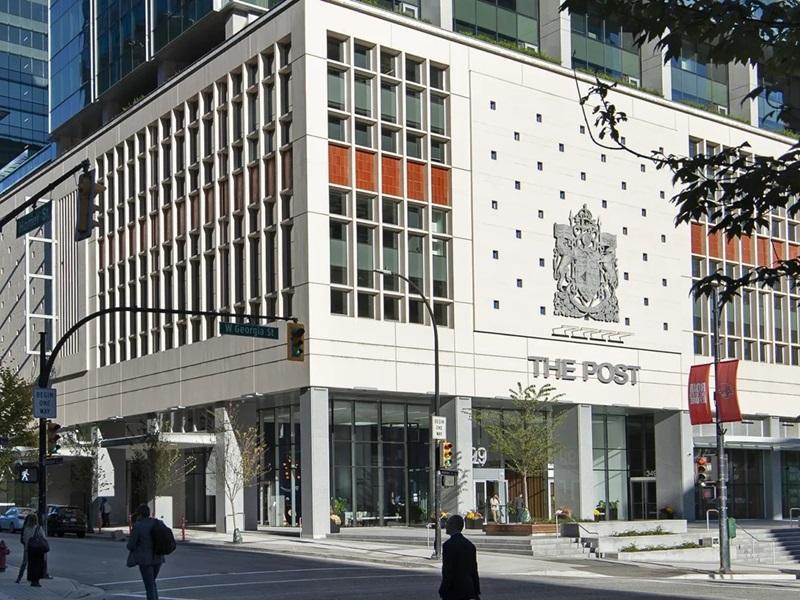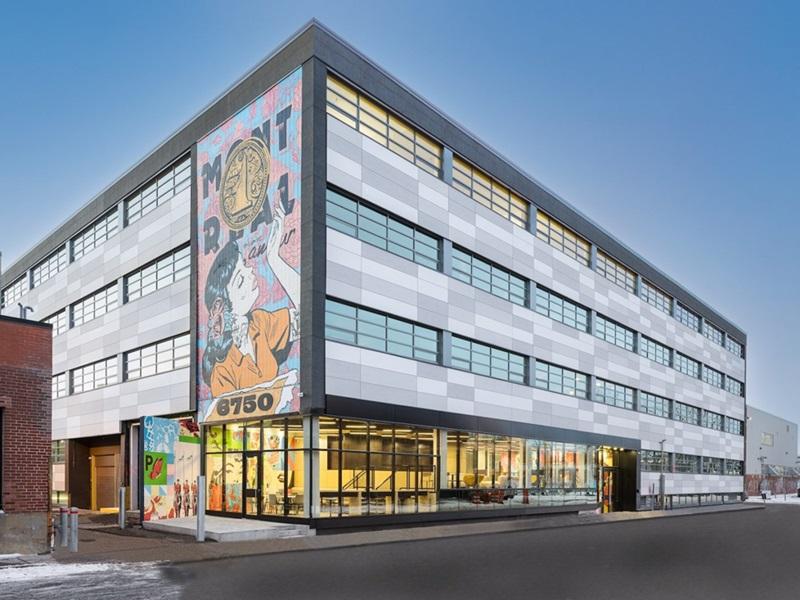One of the stories of our lives over the past 14 months has been the transformative shift from office to work-from-home. However, what we may not have been so quick to discuss or assess is the multifamily rental homes around the country that make up a large portion of our new “office space.”
Pandemic or not, Canadians continue to need homes and always will — and as the Canadian government prioritizes increased immigration to stoke our recovering economy, urban rental homes will remain crucial.
Colliers recently conducted a national panel discussion on Canada’s regional purpose-built rental apartment building market to offer snapshots of the current state of each city and forecast where each market appears to be heading.
In Part I, we focus on Victoria, Vancouver and Calgary.
VICTORIA: Grant Evans, senior vice president
On how the pandemic revealed resiliency in Victoria
The pandemic has proven Victoria is a resilient multifamily market. This can be attributed to our stable government workforce and a larger retirement population. Both of those populations have continued to be reliable tenants throughout the pandemic.
The capital region market is set up to weather this storm better than most. We continue to see a lot of new rental apartments being built, particularly in the Western communities.
More than 60 per cent of multifamily buildings being built in Greater Victoria are purpose-built rental versus condominium. This will alleviate some of the pressure, given the low historical average vacancy rates of 1.56 per cent the past 10 years and 1.33 per cent the past 15 years.
On the rising investment appetite
The current robust investment market is a strong sign of demand from investors, both institutional and private. However, there is a shortage of apartments for sale for both buyer classes. There’s increased appetite from REITs and other institutional buyers aggressively trying to get a foothold in our market, or expand existing portfolios here.
A year ago, about 400 rental apartment units sold. So far this year about 800 units have sold or are under contract. That’s a huge uptick. We’re no longer a secondary investment market in B.C. and Greater Victoria has provided higher returns than other larger markets across Canada.
We continue to have a relatively low vacancy rate of 2.2 per cent; we’re seeing the higher vacancy rate in newly constructed apartment buildings where rental incentives are often required during these uncertain times. The completion of additional rental buildings over the next 12 to 18 months will help ease strain on the rental market.
On signs of economic vitality and possible oversupply
2019 was the best year on record for apartment building sales in Greater Victoria, with about $505 million in transactions. That’s a significant number for our small market and we expect to pass that in 2021.
We expect the provincial government will continue to be active in purchasing buildings to alleviate the housing crisis for those in need. In 2020, the government accounted for approximately 22 per cent of apartment dollar value in acquisitions.
Furthermore, given the low interest rate environment and the wide spectrum of qualified buyers, we expect to remain busy for at least the next couple of years. Victoria’s unemployment rate is 5.7 per cent, one of the lowest in the country and a strong indicator of our economic stability, which investors recognize.
What we need to watch for, though, is a potential oversupply in the Western communities. Although Langford is the fastest-growing community in B.C., there could be an oversupply in this specific region.
We need to keep an eye on provincial regulations such as rental freezes and tax implications as these could also impact multifamily investment.
VANCOUVER: Dan Chatfield, associate vice president
On shifting from COVID crash to swift, strong renewal
Following the lowest yearly transaction volume in recent history, the Greater Vancouver apartment market witnessed a surge of investment activity in Q1 2020. With an increase in total sales volume of over 400 per cent compared to Q1 2019, it was the most active first quarter ever recorded.
Just like the rest of the world, the investment market then screeched to a halt when the pandemic struck.
However, Greater Vancouver landlords saw 98 per cent-plus rent collections from April through August, prompting investor confidence to flood back. As 2020 concluded, total Greater Vancouver apartment sales posted 26 per cent higher than 2019 and this momentum has carried over into 2021, showing no signs of slowing down.
On vacancy rates and the benefits for renters, existing landlords and new investors
While rent collection remains strong, vacancy rates have increased in certain areas throughout Greater Vancouver, specifically in older, renovated buildings. For the first time in over a decade, renters are experiencing a market with substantially more options.
A large part of this turnover is due to the ever-increasing number of new, purpose-built apartment buildings coming to market and tenants’ “flock-to-new” mentality.
Demand for new buildings has been unwavering. Even during the height of the pandemic, average rents for new buildings increased to nearly $2,100 in Greater Vancouver, with approximately 80 per cent of available units being leased within six months.
For a landlord, this turnover increase isn’t always a bad thing. We’re working with several clients listing properties with vacancies; it represents an opportunity for the owner to capitalize on the inherent projected value of those units and for the buyer to realize that value immediately, something rare in our market for a very long time.
On potential upcoming obstacles
One challenge I foresee is rising interest rates, which especially in Vancouver, have been historically correlated with low capitalization rates. If interest rates continue to increase, it will be interesting to see how investor demand is affected.
As Grant Evans mentioned above, the province will rule in July on extending the rent freeze, which I expect to continue through 2021.
Aging assets coming on the market will require additional investment through capital improvements and there’s concern from the investment community that with rental rates frozen, the going-in return on an investment will continue to decrease unless there is turnover.
CALGARY: Eric Horvath, senior V-P & partner, National Investment Services
On investment hesitancy before and during the pandemic
Calgary’s pandemic experience is quite different than that of the rest of the country. In March 2020, as COVID-19 emerged, oil prices collapsed. An oil price war combined with the pandemic, remote-work shift and efforts to reduce carbon emissions have spurred major job losses.
The downtown Calgary office vacancy rate has climbed to roughly 30 per cent and unemployment is at 10 per cent.
The pandemic continues to delay recovery and prevent certainty in the Calgary apartment building market.
Due to the nature of our municipal tax base and the loss of municipal property tax revenue (from unoccupied office space), operating costs in all asset classes have correspondingly increased. Rental rates have remained flat or retreated and vacancy rates have increased as migrant workers returned to their home provinces due to the lack of available local jobs.
The investment market has, by and large, become dormant. The few would-be buyers believe bargains should be available; sellers are waiting out the storm.
While net income has been reduced, interest rates have been on the decline, further compressing cap rates and keeping values static.
This has created a situation where investors (both sellers and buyers) remain uncertain. As a result, they’ve been kicking the can down the road while trying to understand what this means for near-, mid- and long-term prospects, along with, more specifically, their current and future real estate investments.
The pandemic has certainly amplified any remaining investor interest in multifamily properties, which is perceived to be a less risky (investment) asset class compared to alternatives.
Investors who’ve traditionally focused on alternative assets are realigning their interests to include the apartment market. At the same time, buy vs. sell pricing expectations have paused transaction volume and deal velocity.
More residents left Alberta than arrived in 2020 – the first case of negative migration I can remember. We need to get back to neutral to positive migration.
According to CMHC, we are at a 6.6 per cent vacancy rate so for renters there are plenty of options.
On room for local investment
The investment sales market appears to be taking a “wait-and-see” approach. What little investment interest we are experiencing is primarily focused on multifamily rental, followed closely by industrial real estate. Institutional buyers are mostly focused on newer purpose-built inventory.
This is notable because that inventory appears to be in surplus for the first time in decades. The newer rental inventory tends to command higher rental rates.
We have always had a relatively small purpose-built rental universe in Calgary compared to other major Canadian cities. Historically we’ve had around 40,000 purpose-built units in Greater Calgary.
Through the last 15 years, we had lost about 5,000 of those units to condo conversion. Within the last five years, these “lost” units have not been added back into inventory. While we had ample condo construction, we never really had any notable or traditional rental construction.
In 2020-’21 there was an addition of approximately 11,000 new rental units either delivered, or in various stages of planning or completion.
Calgary offers tremendous value compared to other major Canadian centres, especially for buildings 30 to 40 years old. If you are ready to invest money and sweat, you can move rental rates up, create some operational efficiency and really create value.
On what will drive a return to success
The Alberta market is waiting for the pandemic to end. We are waiting for clear direction on the economy.
Economic diversification, technology, agribusiness and bioscience will help define the city and province in the years ahead. Calgary maintains the youngest well-educated population in the country.
Affordable housing; excellent health care and education; a low crime rate; access to natural amenities including Banff National Park, the Rocky Mountains, the Bow and Elbow Rivers; and the Calgary pathway systems are just several hallmarks that will propel Calgary into the future.
Once the international border opens again, industry members across the country feel immigration will account for a sizeable portion of the unabsorbed surplus units, an influx of residents which will also help create and define the new economy.











